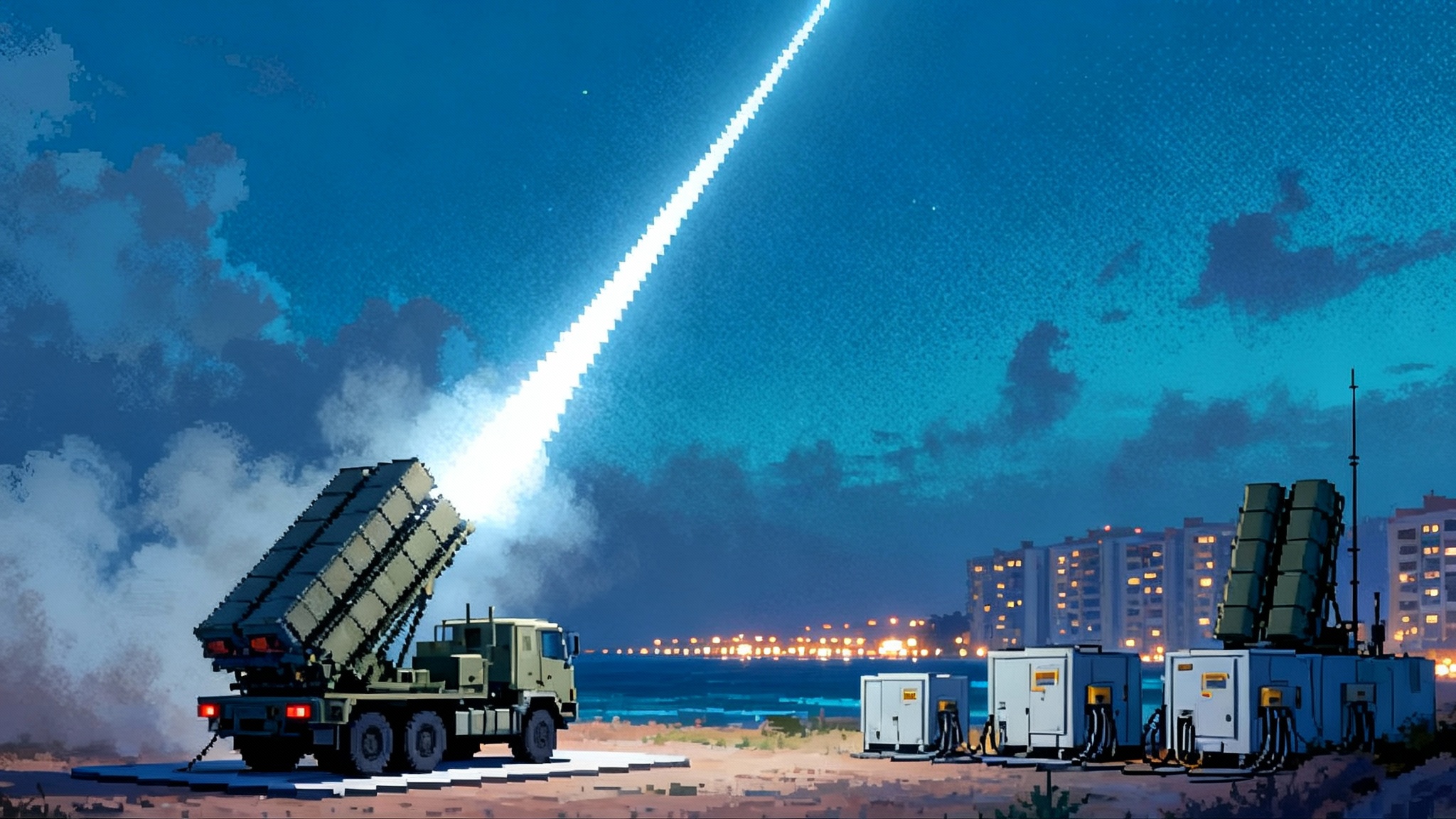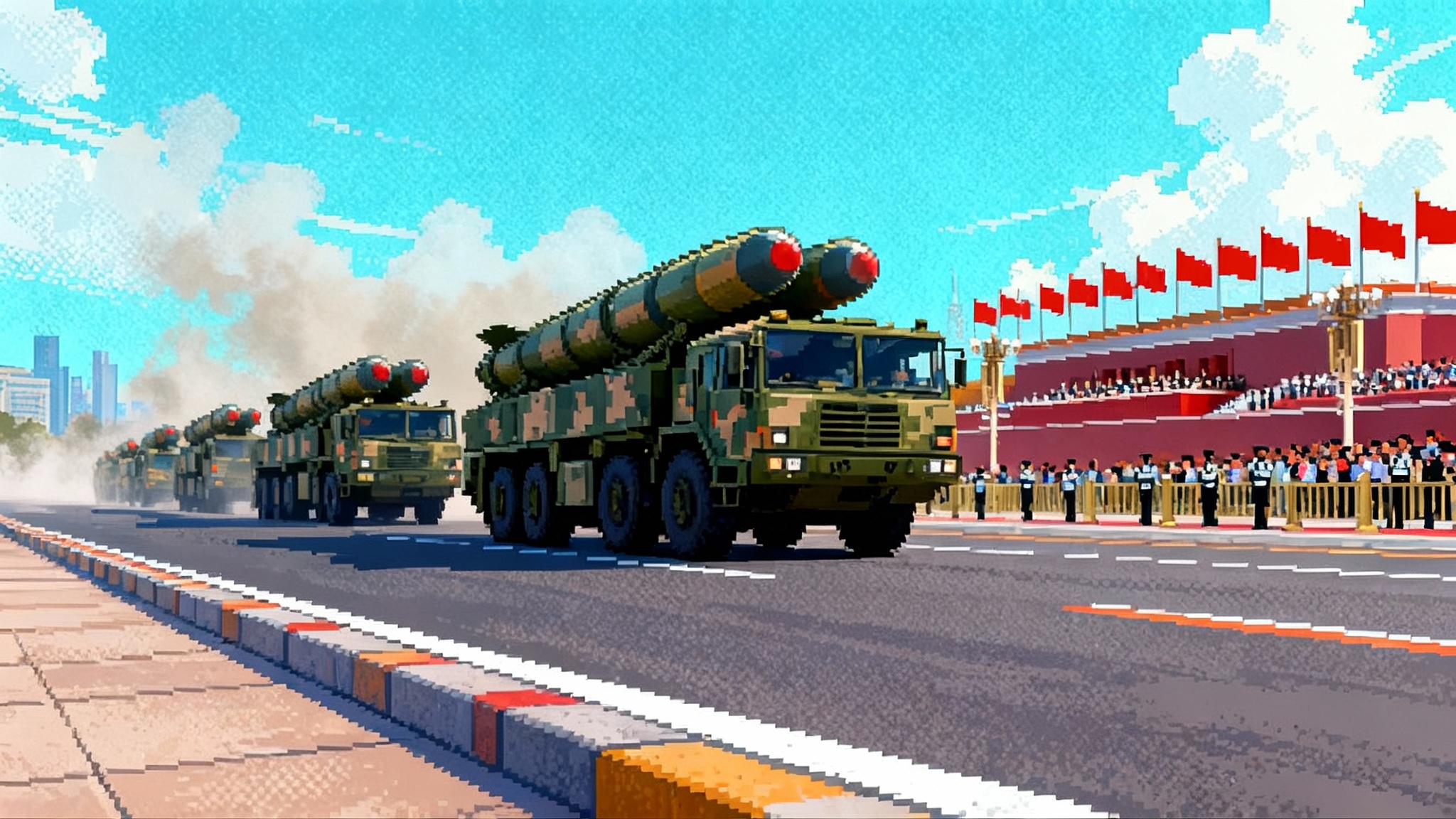Laser Air Defense Hits a Tipping Point: China, Israel, NATO
September 2025 delivered a string of firsts. China paraded operational lasers and microwaves, Israel said its 100 kW Iron Beam would enter service by year’s end, NATO scrambled after Russian drones crossed into Poland, and the Pentagon began deploying domestic flyaway kits. Directed energy just moved from demo to duty.

September 2025: the week lasers stopped being future tense
Sometimes history announces itself in a single news cycle. This September did just that. In Beijing, China’s Victory Day parade put high energy lasers and high power microwaves on the same stage as intercontinental missiles, signaling a new priority for the People’s Liberation Army. The most photographed boxes on flatbeds were the LY-1 laser and the OW5 family that Chinese media framed as part of an anti-drone triad. For a concise inventory, see Reuters parade inventory.
Days later, Israel’s Ministry of Defense said the 100 kW Iron Beam laser had completed trials and would be ready for military use before the end of 2025, slotting into the country’s layered shield next to Iron Dome and David’s Sling. This was not a science fair moment, it was a procurement moment that forces everyone else to update spreadsheets. For context on fielding timelines and integration, see Reuters on Iron Beam readiness. For deeper background, read our analysis of Iron Beam operational economics.
At the same time, NATO defenses were jolted by Russian drones crossing into Polish airspace during a mass strike on Ukraine. Polish and allied jets scrambled, ground defenses fired, airports paused operations, and alliance officials called the incursion unprecedented in scale inside NATO territory. For how this is reshaping doctrine, see NATO drone defense lessons after Poland.
On the U.S. home front, the Pentagon began rolling out counter-drone flyaway kits for domestic bases. These are modular, rapidly deployable packages that combine sensors, command software, non-kinetic effects, and last-ditch kinetic options, all designed to be FAA compliant on American soil.
When you stitch these headlines together, they tell a single story. Directed energy has crossed from demonstration to adoption.
What the new systems are built to do
-
China’s LY-1 and OW5: Imagery and official hints suggest LY-1 is a high energy laser designed to cue off existing sensors and defeat line-of-sight threats like drones, quadcopters, and possibly cruise missiles at short range. OW5 appears to include both laser and microwave variants on wheeled chassis, framed as a flexible counter-UAS package. The key takeaway is scale and integration language that places directed energy alongside missiles and guns.
-
Israel’s Iron Beam: A 100 kW class fiber laser that has demonstrated intercepts of small rockets, mortars, and drones in controlled tests. The concept is to assign Iron Beam the close-in, high-volume, low-value targets that would otherwise drain interceptor magazines. It plugs into existing command and radar networks and is meant for routine missions, not lab curiosity. See our primer on per shot shield math.
-
U.S. flyaway kits: Not a single gadget but a curated stack. Portable radar and passive RF detection, electro-optical tracking, a battle management layer, jammers to deny control links and GNSS, and if needed a compact kinetic finish. The point is speed of deployment and regulatory compliance inside the National Airspace System.
The cost per shot math finally pencils out
Kinetic missiles are outstanding at killing fast, hard targets, but they are expensive and finite. A single short-range interceptor can cost tens of thousands of dollars, and medium-range rounds can cost far more. When the incoming threat is a 3,000 dollar drone or a 500 dollar first-person-view munition, that is a terrible exchange rate.
Lasers invert that equation. The marginal cost of a laser shot is the electricity it consumes. Even with pessimistic assumptions, a 100 kW beam engaged for five seconds draws only a few kilowatt-hours when you include inefficiencies. At typical generator or grid rates, that puts the energy cost in single digits of dollars. Capital and lifecycle costs still matter, but once the hardware is onsite, each engagement is almost free compared to a missile. That enables tactics that were previously unaffordable, such as engaging decoys or taking multiple passes to ensure a kill without sweating the budget line.
Magazine depth also shifts from canister count to fuel, power, and heat. If the generator runs and cooling stays within limits, your magazine is effectively deep.
Power, heat, and weather set the playbook
Directed energy is physics in public. Three constraints dominate real deployments:
-
Power: A 100 kW beam does not live alone. Wall plug efficiency for high energy lasers is improving but remains far from perfect. A practical 100 kW class laser can demand several hundred kilowatts of electrical input when you add beam control, stabilization, and the fire control stack. Ships with megawatts on tap manage this load more easily than trucks.
-
Thermal management: Every joule that is not on the target becomes heat inside the system. That heat must be removed through liquid cooling, radiators, phase change materials, or chilled water. Thermal buildup sets duty cycle limits. After a flurry of shots, crews may need to throttle back.
-
Atmospherics: Lasers like clear, dry air. Fog, rain, dust, and smoke scatter and absorb energy. Turbulence distorts beams, demanding better adaptive optics and sometimes limiting range. High power microwaves are less sensitive to some weather effects and can couple energy into electronics across a formation, but they bring their own discrimination challenges.
How lasers and microwaves fit into layered defense
Think addition, not replacement.
-
Detection and track: Radars, passive RF sensors, and electro-optical systems build the picture. In most deployments, the laser is a shooter, not a spotter, and needs tracks handed to it.
-
Engagement windows: Lasers are ideal in the inner layer around ships and bases, inside roughly 2 to 10 kilometers depending on power and conditions. That is the zone where drones, gliding munitions, and rockets become soft targets for a focused beam. Microwaves broaden this to formations and swarms at closer ranges when precise aimpoint kills are less important than quickly stopping a mass.
-
Kinetics still matter: For fast, hard, or distant threats, missiles and guns remain essential. Directed energy preserves those rounds for when they are truly needed.
-
Ships are natural homes: Naval platforms have power, cooling, and stable decks. A 60 to 150 kW laser can sit alongside close-in weapons and short-range missiles, integrated with the ship’s combat system.
-
Fixed sites and expeditionary bases: On land, lasers protect radars, fuel farms, and living areas from cheap attackers. The U.S. flyaway kits reflect a growing reality that the drone threat is not only overseas.
The industrial race and who can sell what
Directed energy is also a supply chain contest:
-
Photonics and power electronics: High brightness fiber lasers, beam combiners, ruggedized optics, gallium nitride power stages, and advanced thermal systems are the heart of these weapons.
-
Software and integration: A laser without a battle manager is a light bulb. The winners bundle sensors, tracking algorithms, adaptive optics, and fire control into turnkey stacks that plug into existing command networks.
-
Export controls and diffusion: Expect tight control on the most capable beam directors, power sources, and beam combining intellectual property, even as less sensitive components move more freely.
For buyers, the practical question is who can deliver at volume with training, spares, and updates, not just a one-off demonstrator. In 2025 the answer is a short list, and that will shape alliances and defense industrial policy. The surge in attritable systems under programs like Replicator shifts from hype to hardware only increases demand for counters.
Escalation risks in a swarm world
-
More swarms, more decoys: If lasers start harvesting small drones cheaply, attackers will send more, spread them out, and add thermal shields or reflective coatings to increase dwell time requirements. They will fly in bad weather, drag smoke, and exploit terrain. High power microwaves will invite hardened electronics and autonomy that can ride out short bursts of disruption.
-
Ambiguity with manned aircraft: Blinding and dazzling concerns are real. Doctrine will keep lasers away from pilots’ eyes, but crowded skies create risk. That raises the premium on tight rules of engagement and sensor fusion.
-
Domestic use and civil liberties: At home, the drone threat around airports and mass events is growing. The legal authorities behind domestic counter-UAS will be stress tested, which puts a premium on auditing, clear temporary flight restrictions, and transparency about when jammers or kinetic options are used.
What to watch next
-
Fielding cadence, not just headlines: Israel says Iron Beam will be fielded by year’s end. Watch how many units, where they sit, and how they are tasked during routine alerts.
-
Chinese sea trials and doctrine: Monitor deployments on amphibious or escort ships and for training notices that pair lasers with short-range missiles.
-
NATO standardization: After Poland’s experience, expect a sprint to align counter-drone sensors, data standards, and engagement authorities across borders.
-
U.S. domestic authorities: Look for expanded permissions for federal and selected state entities to detect, track, and mitigate, along with funding for training and real-time access to remote ID data.
-
Weatherized lasers and hybrid batteries: Expect better performance in bad air and smarter power management that smooths spikes so a truck with a modest generator can still deliver a steady beam.
-
Shipboard power upgrades: Navies moving to integrated electric propulsion are creating headroom for 150 kW and beyond.
The bottom line
September 2025 reads like a pivot. China is parading lasers and microwaves as mainstream air defense tools. Israel is about to put a 100 kW laser on routine duty. NATO just had to counter drones on alliance soil at scale. The United States is mobilizing domestic kits to keep bases safe under civil aviation rules. The economics now favor directed energy for the low end of the threat spectrum, and the engineering is good enough to trust in the field within its known limits.
Lasers will not replace missiles, and microwaves will not make guns obsolete. What they will do is restore affordability and endurance to the inner layers of defense on ships, air bases, and critical infrastructure. The race now is not to prove the concept, but to industrialize it responsibly and integrate it thoughtfully.








